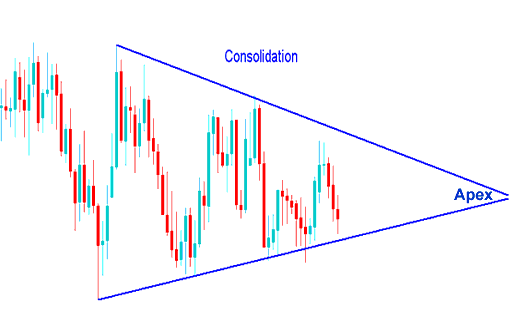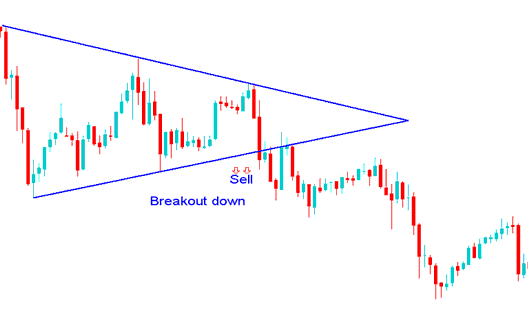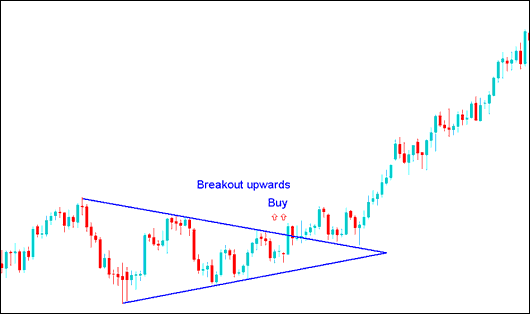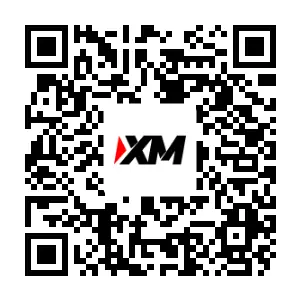Bilateral/Consolidation Stock Chart Setups Trading
Regarding chart patterns exhibiting bilateral movement or consolidation in stock trading, the market direction remains uncertain, capable of moving either way. Two primary types of consolidation trade patterns manifest on charts:
- Symmetric/Symmetrical Triangles - Consolidation Chart Patterns
- Rectangles - Range market
Consolidation Patterns
Symmetric triangles are chart patterns characterized by converging trendlines that indicate a consolidation phase. The buy signal from a symmetrical triangle occurs upon an upward breakout, while a downward breakout serves as a sell signal. Ideally, a market will break out from a symmetrical triangle before reaching the apex of the triangle.
You can draw lines connecting the lowest and highest points of this stable pattern: these lines are even and move closer until they meet at a point. A breakout should happen around 60-80% of the way into the triangle shape. Breakouts that happen too early or late are more likely to fail and less reliable. When the price breaks out, the meeting point becomes an area of support and resistance for the price. The price that has broken out of the stable pattern shouldn't go back past the meeting point. This meeting point is used as a place to set a stop loss for open trades.
When we see these consolidation patterns, it means the market is pausing to figure out where to go next.
Consolidation patterns arise from buyer-seller battles. The market pauses on direction.

Consolidation Chart Pattern
But this can't last forever, and like in a tug of war, one side will eventually win: look at the chart below and see how the pattern eventually broke and moved in one direction. How do traders make sure they are on the winning side?

Break-out Downwards Sell Signal after a Consolidation Setup Pattern

Break Out Upward Buy Trading Signal after a Consolidation Setup Pattern
Returning to our inquiry, how can we guarantee that we are aligned with the winning side?
Here's what we do: we wait for the price to break above or below one of the lines, then place a buy or sell order in that direction. Once the price breaks out from consolidation, if it goes above the upper line, we buy. If it drops below the lower line, we sell.
Alternatively if you don't want to wait out the consolidation, you can use pending orders. If you would want to know more about pending orders go to the lesson: Stop Entry Order Types
The two types of stop orders utilized for trading consolidation patterns are:
- Buy Entry Stop A pending order to open buy at a level that is above trading market price.
- Sell Entry Stop An order to open a sell at a price below trading market price.
These are orders structured to initiate a purchase agreement above the immediate market price or to commence a selling position below the current market price.
Rectangle Setup
A rectangle pattern marks tight price ranges in calm phases. Two flat lines set support and resistance. Draw it as a box on charts, so it fits the name.
When prices consolidate, they make several highs and lows that can be connected with straight, horizontal lines that run next to each other. This happens for a long time, giving the trading chart the shape of a rectangle.
A breakout happens when price crosses one of the horizontal lines in the consolidation box. Breaking the rectangle's range signals action. Upward breaks mean buy. Downward ones signal sell.

Rectangle Pattern Stock Index - Consolidation Pattern
After breaking out of a consolidation phase, prices typically continue moving upward, indicating upward momentum.
Get More Lessons:
- Comparison Between the Shooting Star and Inverted Hammer Candlestick Patterns
- Beginner-Friendly Stock Index Software Solutions
- How Do You Analyze Fibo Extension Levels Indicator in Trading Software Platform?
- Analyzing Index Trading Strategies
- Types of Index Brokers
- What is S and P 500 Chart?
- How Can I Add IT40 in MetaTrader 4 Android Trade App?
- Tips for Trading Index Strategies

